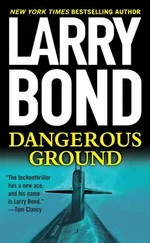The enemy’s order of battle near the beach landing site was largely made up of small detachments of Basij militia and IRGC ground forces, although the former would be the most likely enemy forces should there be an encounter. The nearest Iranian Army units were located in Shiraz, approximately 125 miles to the north. The nearest naval facility was the IRGC naval base at Asaluyeh, thirty-six nautical miles to the southeast. The assets there were almost entirely lightly armed fast patrol boats.
The platoon leader then went over the rules of engagement, dealing with each scenario in detail. Since the mission was clandestine, denying the enemy any knowledge of the team’s presence was paramount. Therefore, weapons fire was restricted to self-defense only. If the enemy was firing at you, he already knew you were there. To minimize the chance of an ambush, CENTCOM was allocating an RC-135 SIGINT bird, to monitor the electronic environment, and a medium endurance UAV with the best infrared sensor package available in theater would have “eyes” on the beach landing site.
Ramey then began walking through the mission-phase diagram box by box. He recapped the original mission order, along with an overview of the equipment loaded onto the ASDS. He then described the weaponry and equipment to be carried by the extraction team, followed by a discussion of the communications plan. To prevent the Iranians from detecting their presence, any communications with Michigan would be with the directional PRC-117 SATCOM radio. Comms between team members and the ASDS would use the PRC-148 MBITR personal radios on the lowest power setting.
His laser pointer then moved over to the fifth box that said “Mobility,” followed by the bullet “ASDS Launch.”
“We will launch at 1630, two hours and forty minutes before last light. XO, please brief your part of the mission.”
Jerry stood and moved so he could point to their track on the screen. “After launch, initial course is zero zero zero true for forty minutes, then a turn at Point X-Ray to zero three zero for an hour and a half, all at eight knots and a depth of one hundred feet. The transit time accounts for the tide, which is ebbing at that location and will throughout this op. The dogleg adds a few miles to the run in, but we avoid a large shoal area to the east. Total length of the run is 18.3 miles, and the total time is two hours twenty-five minutes. We arrive at 1855, with fifteen minutes of margin for the 1910 diver lockout.
“There are no known large underwater obstructions within several miles of our route and the bottom slopes gently toward the shore, with the average water depth starting at one hundred eighty feet and gradually reducing to forty. When we reach Point Yankee, we slow to four knots and make a quick periscope observation of the landing area. We should be one mile from the shore at that point and we should be able to see our passengers on the beach. The last mile we creep in at four knots at an initial depth of thirty feet, coming shallower as we get closer. We stop at Point Zulu, three hundred meters from the shore, rise to a keel depth of fifteen feet and hover there at neutral buoyancy.”
Ramey nodded, following Jerry’s narration in his notes. “Petty Officer Lapointe.”
Petty Warfare Operator First Class Nathan Lapointe was from Baton Rouge. Short and compact, he was an excellent swimmer, even among the SEALs. He was also the communications expert, and the senior petty officer on the team. “The four-man element locks out by 1910 and approaches submerged to within a hundred meters of shore. I surface to do a quick look, and if it’s clear, the swim pairs split and complete the approach on the surface, blacked out in a combat swimmer mode. Fazel is with me and Petty Officer Phillips is with Mr. Ramey.
“Both swim pairs reach the beach by 1930. We come ashore about fifty meters apart, flanking the precious cargo that should still be on the beach. If that’s the case, I’ll go and take up an overwatch position here.” He pointed to a spot on a satellite photo of the beach. “I can watch the road, the beach landing site, and the dead space behind this rise.
“Once I’m ensconced, I’ll signal you that I’m in place and that the coast is clear. If at any time I see problems, I’ll alert the other element members and extract by the secondary route. I don’t make contact with the precious cargo, but provide cover for the rendezvous, and the withdrawal. Once the precious cargo is safely in the water, I’ll abandon the overwatch position, link up with my swim buddy, and we withdraw from the objective area together.”
“And once you send the All clear,’ the rest of us will move toward the rendezvous point,” Ramey continued. “Fazel on the left, Phillips and I are on the right. Fazel and Phillips establish a security perimeter while I make contact and establish the assets’ bona fides. The pass phrases are typical CIA, cutesy, but simple, and they should be sufficient. The phrases are the two stanzas from the nursery rhyme, ‘Star Light, Star Bright.’ I give the first stanza in Farsi. They respond with the second stanza in English. Harry’s been getting my Farsi up to speed, but since he’s a native speaker I’ll want his ears close to me just in case there’s an issue. Once we are sure of whom we have, I’ll fit them with swim bladders and Petty Officer Phillips and I get them into the water. We’ll conduct a surface swim back out to the ASDS, which hopefully will be able to get closer. The main concern is the water temperature. The latest data shows the surface water running about sixty-seven degrees Fahrenheit, a bit chilly for civilians.”
Special Warfare Operator Second Class Heydar “Harry” Fazel was the team’s medic, a hospital corpsman second class and the next senior after Lapointe. Every SEAL mission included a medical specialist, and Fazel’s skills would have made him a physician’s assistant in the civilian world. Although a medic, he would be armed to the teeth like the other members of the extraction team. “I cover left and stand by in case you need translation, but stay close enough to Pointy to lend assistance as needed.” Fazel was a first-generation American, born in the U.S. after his parents had fled the Iranian Revolution in 1979.
“After the Boss, Philly and the precious cargo are back in the water, I wait for Pointy at the water’s edge, and we egress together. I also signal Commander Mitch — I mean the XO — that we are feet wet. After we are back on board the ASDS, I’ll check our guests for hypothermia, just to be safe.”
Jerry finished. “Higgs and I will keep the ASDS at periscope depth with both masts exposed, about a foot of mast out of the water. Once we receive your signal we’ll move in to meet you as water depth allows. Once the swimmers are close by, I’ll broach the ASDS to allow access to the upper hatch. After everyone is back aboard, we get as deep as we can and retrace our route back to Michigan .”
Lieutenant Ramey nodded approvingly. “That’s the plan. Now, last chance. Any more thoughts on the last-minute change?”
Jerry replied first. “Doubling the distance is still well within the margin for the batteries. The usage curves on the exercises we ran were close to the manufacturer’s specs. The only issue was the power surge during the last run. Alex, have you been able to run that issue to ground?”
“We think so, sir,” replied Carlson. “We replaced a motor controller on one of the aft thrusters that had an intermittent ground. We’ve checked both the new motor controller and the batteries with three diagnostic runs and they’ve come up green each time.”
Fazel chimed in and said, “I’ve already raised my concern. If there are casualties, it doubles the time until they’re treated.”
Читать дальше












